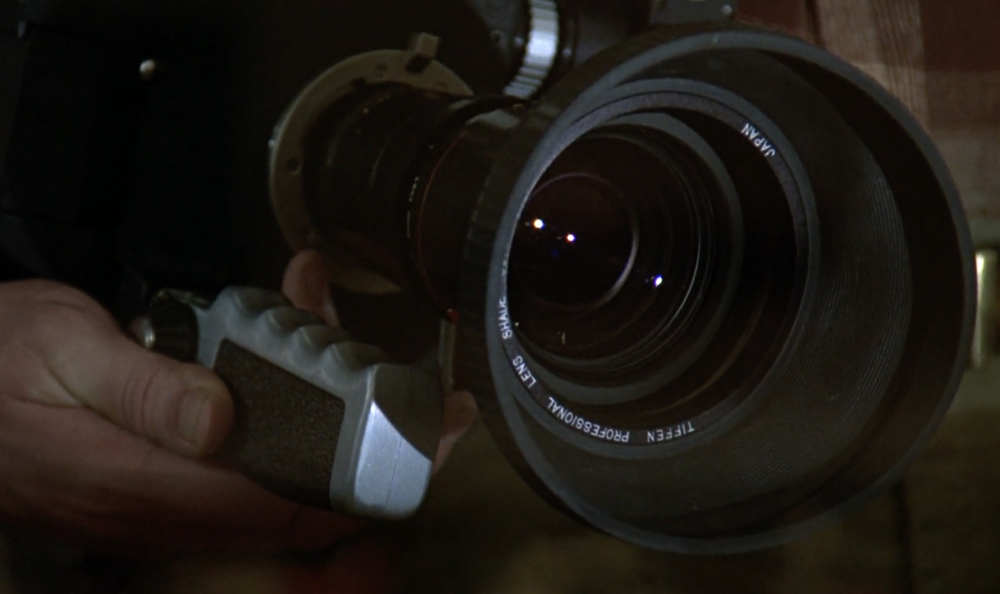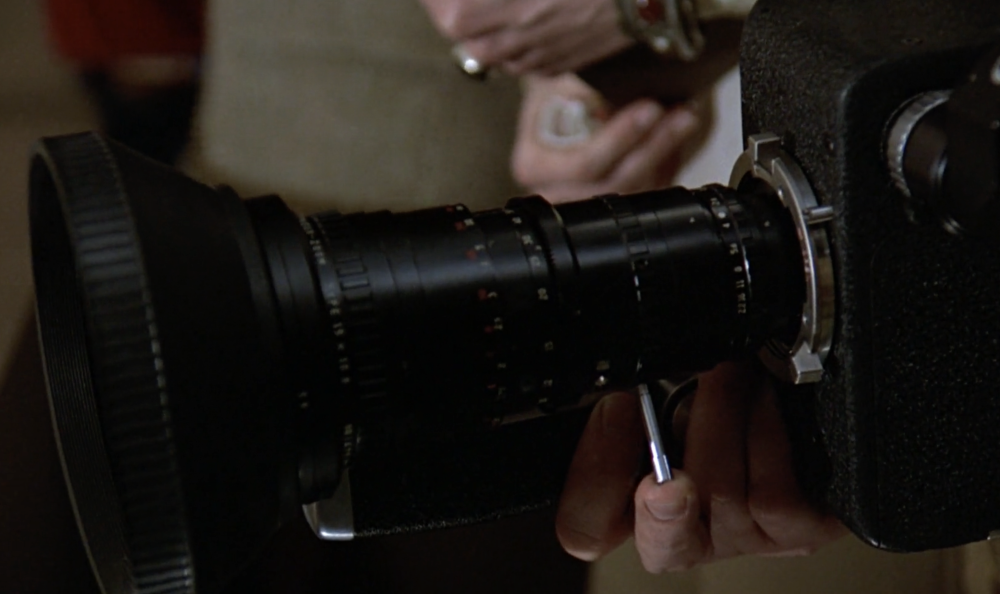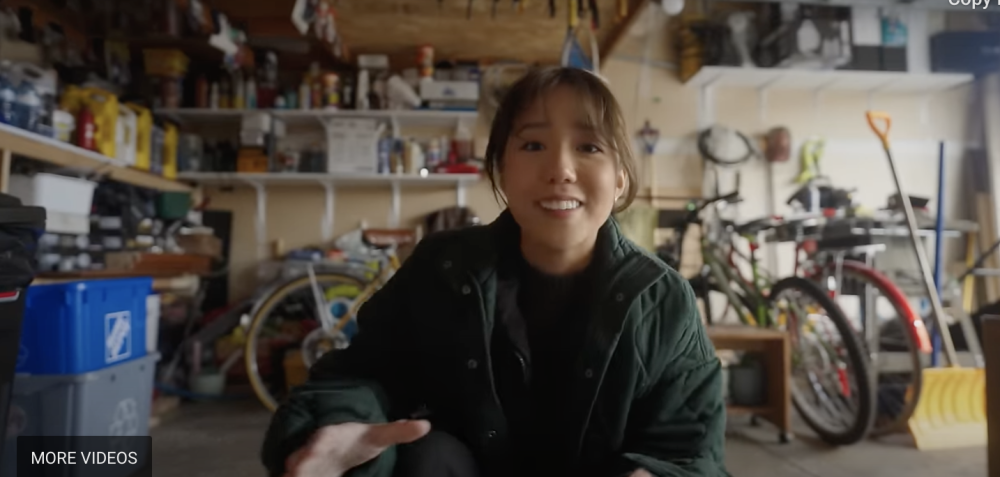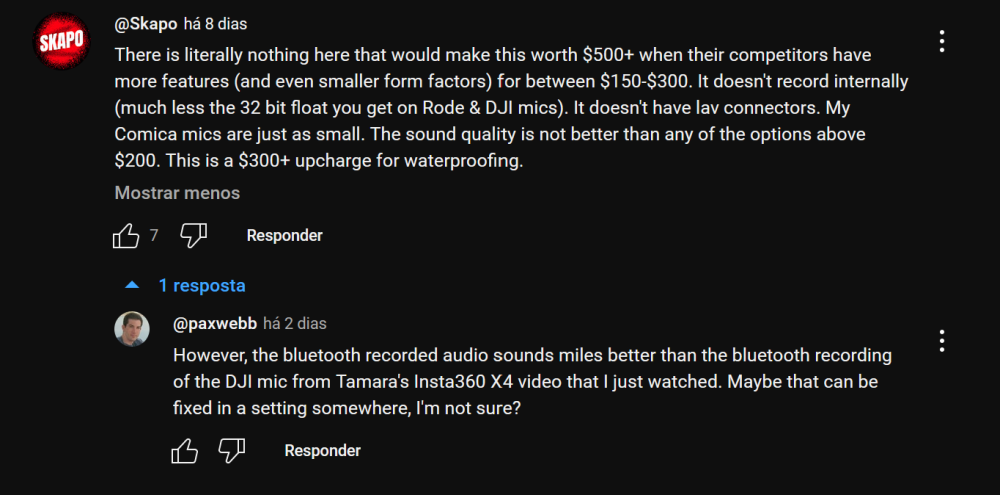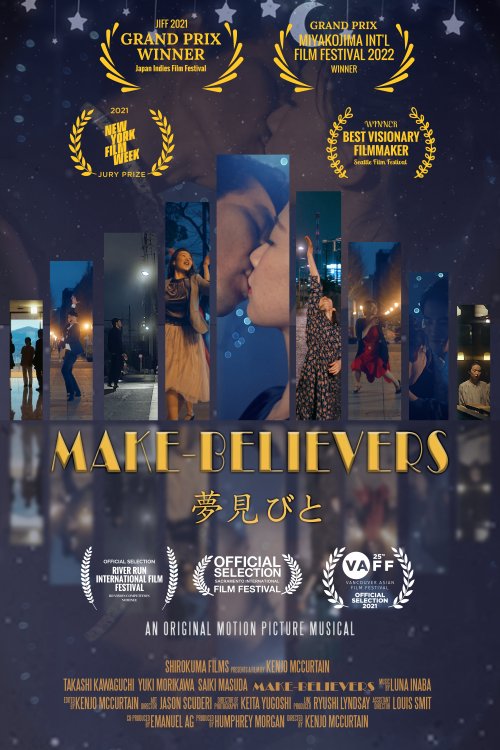Leaderboard
Popular Content
Showing content with the highest reputation since 04/22/2024 in Posts
-
After posting the previous post I went back and compared the looks a few times and realised I was a bit harsh on the ARRI LUT, considering that it was very flattering on my battered skin tone but basically didn't screw up the strong colours too much, whereas the film look is much stronger without being that much more flattering. Inspired by the ARRI LUT, I created this custom grade from scratch. SOOC (for reference): New Custom Look: ARRI LUT (for reference): I'm actually really happy with that look - I went a bit further in evening out the skin tones and brightening them up a bit and it didn't seem to come at the expense of anything else. I think I could easily build a look around this, and will experiment further.3 points
-
Sigma have announced that they are releasing a range of RF mount lenses, indicating that Canon have softened their “no 3rd party lenses” stance. I say softened rather than abandoned as, whilst these lenses are fully licensed by them, they do not include any full frame lenses. At least for now. The initial offerings are the two f2.8 zooms and four f1.4 primes from Sigma’s Contemporary range that have been available in other mounts for a few years now. The 18-50mm is the first one that will be available but it is not until July and the others will follow in the Autumn. No word on prices but they are usually similar in different mounts so you can take that as a rough guide, although maybe there will be an additional cost on top for the official licensing from Canon. Good news for owners of crop RF cameras to have different options and also for people using the KOMODO (or maybe we should call it the NIKOMODO now). Full details here https://www.sigma-global.com/en/contents/sigma_rfmount_lenses/3 points
-
CP16. Cinema Products brand…who were also making this new gadget called a Steadicam that’s about to be 50 years old. It was a common news film camera. They also had mag film where the sound was recorded directly onto a mag stripe on the film itself. It wasn’t as good as the open reel recorder of course. I used one on my first short movie. It feels very cheap and lightweight but it was a staple.3 points
-
PicoMic is still smaller and lighter, and the newer Pro version can use a lav mic. The receiver is bigger, but it's also the storage/charging dock for the transmitters, which is handy when you're going from mic'd to not mic'd, changing speakers often, etc. They just need internal recording and they'd be perfect IMO.3 points
-
It's possible to synthesize all sorts of microphone types/polar patterns, including things like perfectly co-incident stereo pair mics (which are impossible to physically build), from a B-format Ambisonics stream/recording - https://en.wikipedia.org/wiki/Ambisonics#Virtual_microphones - and also produce a binaural stream - https://en.wikipedia.org/wiki/Ambisonics#Decoding I think that post-processing flexibility is the real strength of using a Soundfield microphone for ambient sound recording.2 points
-
I'm still lost down this rabbit hole, but these are an interesting reference. This is what happens if you put the GX85 through a "look". I put the GX85 test image through a bunch of output LUTs to see which (if any) I liked the flavour of. In order to compare them equally, I adjusted after the LUT to match the black and white points, exposure, and contrast. This way we're not just comparing the different contrast curves, but the other aspects of the LUTs like colour rendering etc. The node structure was this: slightly lower gain to bring GX85 image into range (it records super-whites) CST from 709/2.4 to Davinci Intermediate (my preferred working colour space) (my grade would go here, but for this test no adjustments were made) CST to whatever colour space the LUT expects The LUT (these all convert to 709/2.4) A curve to adjust the overall levels from the LUT to roughly approximate the GX85 image The round-trip from 709/2.4 to DWG to 709/2.4 is almost transparent, if you compensate for the gamut and saturation compression in the conversion at the end, so I didn't bother to grab it. Results: The famous ARRI K1S1 LUT (the ARRI factory LUT): One of the 5000 BMD LUTs that come with Resolve, which I tried just for fun: The Kodak 2383 PFE (Print Film Emulation) LUT. The D55 one seemed the closest match to the WB of the image for some reason, but everyone always uses the D65 ones, so I've included both here for comparison. The D65 one: The Kodak 2393 PFE. It doesn't come with Resolve but it's free online from a bunch of places. I like it because it doesn't tint the shadows as blue, so the image isn't as muddy / drab. The FujiFilm 3513 PFE: I find the ARRI LUT a bit weak - it helps but not as much as I'd like. The comparison above is flattering to the LUT because it has a bit more contrast compared to the SOOC so looks a bit better. The skintones are a little more flattering on it though, which might be enough if you want a more neutral look. All the PFE looks are very strong, and aren't really meant to be used on their own. The film manufacturers designed the colour science to look good when used with a negative film like Kodak 250D or 500T stocks, so it's "wrong" to use it unless you're grading a film scan, I think people use it like this anyway 🙂 Some time ago I purchased a power-grade that emulated both the 250D and 2393 PFE from Juan Melara, which looks like this: To me it looks much more normal than just the 2393 PFE on its own, but it's definitely a stronger look. The powergrade is split into nodes that emulate the 250D separately to the 2393, and the 2393 nodes are almost indistinguishable from the LUT, so I'd imagine this is probably a good emulation. Anyway, lots of flexibility in these 8-bit files!2 points
-
Color - SOOC vs. LUTs/Grading
eatstoomuchjam and one other reacted to Evgeniy85 for a topic
Hollywood shoots ProRes for the most part, except for VFX plates.2 points -
I did a first impressions thing here when I got my H3-VR. It has examples of the auto down mixed binaural output for general city ambience and you can download the original ambisonic files to see the extent of the steering that you can do with them in post if you every wanted to. I think it obviously punches above its weight and even in binaural mode it does add more pickup width outside of the visible frame as well as a certain degree of rear and height cues so for 180 video I think it might do the trick for what you are after without having to do anything in post. The step up would be the Rode Soundfield mic paired with something like the Zoom F6 or even the new H6 Essential but, obviously, you will then need a more elaborate rig versus the diminutive H3VR and, of course, with no down mix you'd have to do that in post.2 points
-

The China Syndrome (1979): What film camera did Micheal Douglas' character use?
ac6000cw and one other reacted to John Matthews for a topic
2 points -
Ha! Look at Tiffen putting all their info on there for a lens shade!! Talk about padding your part. How funny! Could the lens be a 15-150mm T3.1?2 points
-
I had X2, 1 inch 360 and still have One R 360. I did play a bit more with the X4 The good: - 8k is a very visible bump in quality compared to X3 and 1 inch. Still once reframed is not yet at single lens action cam level but is getting closer. Of course, it really depends on how much you zoom in while reframing. It is more detailed and less compression artifacts. Also, in 360 vr the quality bump is very evident. - operations and UI are snappier than previous models (other than stopping the recording that takes a lot, not sure why) - 5.7k at 60 it allows some slow-motion with X3 quality, in previous models the slowmo was just unusable. - one button operation is customizable so you can set the video mode, frame rate, etc... - battery seems to last a lot, even in 8k 30 - App and Studio are great and work as expected. Connecting the camera to the phone is super easy and always works. Why can't Canon copy them? The ok: - lens guards work ok, great way of mounting them, but is not a free lunch, they need to be super clean, and they still create wired flares. I will probably use mine only on really risky situation. But it is good that they are included. - audio seems a tad better - I don't see a big difference in lowlight compared to the 360 1 inch. They are both quite bad but the X4 is not worst imo that is surprising. - single lens mode allows you 4k 60fps but to be honest the quality gain compared to 8k reframed is not big enough, useful if you need 60fps or you don't want to post process. For example, for chest mount I prefer the reframed angle than single lens. - seems to tend to overexpose but you can set the EV so not a big issue. The bad: - no 10bit log - as for all previous models these type of camera scream for sunny bright days. I mostly using them while moving ski, mtb, horses, cars.... and as soon the light is not great stabilization and video quality suffers a lot. So it is a brilliant camera for sunny days only. - is heavier and bigger than the X3 or the One R + 360 module. - the form factor is perfect for selfie stick but not great for helmet mount. - has only a tripod hole, no gopro mount, it should have both. For action, mounting through the tripod hole will make the camera break in case of any impact where normally the gopro mount would give a bit saving the camera. You can use an adapter, but it makes it even taller. - apparently, every time you turn on the camera you need to re-pair the bluetooth mic. Btw why why and why DJI is disabling internal Mic 2 transmitter recording while connected via bluetooth?!? It would be such a clean solution record scratch over bluetooth (no receiver needed) and have the 32bit float on the transmitter. - external audio through receiver + cold shoe mount + usb adapter is a frankenmoster that is really not usable in action environment. All the YT reviver showing this setup as amazing it makes me cry.... Overall is the best 360 camera on the market by far, coming close to single lens action cam quality, below 2k usd. Finally, after years of stagnation, a tangible bump in quality. With the revival of AR/VR they should do a 180 3D model out this.2 points
-

The China Syndrome (1979): What film camera did Micheal Douglas' character use?
kye and one other reacted to John Matthews for a topic
2 points -
I think that if you can possibly manage it, it's best to provide the simplification yourself rather than through external means. This gives you flexibility in the odd example you need it, and doesn't lock you in over time. The basic principle I recommend is to separate R&D activities from production. Specifically, would recommend doing a test on the various ways you can do something, or tackle some problem, and the options for your workflow, evaluate the experience and results, then pick one and then treat it like that's your limitation. I'm about to do one of those cycles again, where I've had a bunch of new information and now need to consolidate it into a workflow that I can just use and get on with it. Similarly, I also recommend doing that with the shooting modes, as has happened here: I find that simple answers come when you understand a topic fully. If your answers to simple questions aren't simple answers then you don't understand things well enough. I call it "the simplicity on the other side of complexity" because you have to work through the complexity to get to the simplicity. In terms of my shooting modes I shoot 8-bit 4K IPB 709 because that's the best mode the GX85 has, and camera size is more important to me than the codec or colour space. If I could choose any mode I wanted I'd be shooting 10-bit (or 12-bit!) 3K ALL-I HLG 200Mbps h264, this is because: 10-bit or 12-bit gives lots of room in post for stretching things around etc and it just "feels nice" 3K because I only edit on a 1080p timeline but having 3K would downscale some of the compression artefacts in post rather than have all the downscaling happening in-camera (and if I zoom in post it gives a bit more extension - mind you you can zoom to about 150% invisibly if you add appropriate levels of sharpening) ALL-I because I want the editing experience to be like butter HLG because I want a LOG profile that is (mostly) supported be colour management so I can easily change exposure and WB in post photometrically without strange tints appearing, and not just a straight LOG profile because I want the shadows and saturation to be stronger in the SOOC files so there is a stronger signal to compression noise ratio 200Mbps h264 because ALL-I files need about double the bitrate compared to IPB, and also I'd prefer h264 because it's easier on the hardware at the moment but h265 would be fine too (remembering that 3K has about half the total pixels at 4K) The philosophy here is basically that capturing the best content comes first, and the best editing experience comes next, then followed by the easiest colour grading experience, then the best image quality after that. This is because the quality of the final edit is impacted by these factors in that order of importance.2 points
-
Actually, what am I blathering about?! The only time I need the EIS is for tracking the couple, outdoors, once, maybe twice. Doh. Absolute none issue. I'll simply put it on a function button! I'd normally be tracking at '42mm' and it will be '58mm'. I'll just increase the distance between myself and the subject by a couple of feet et voila. Move on, nothing to see here 🤪2 points
-
My impression was that people like the Alexa image for everything. The DR only matters if you're filming something that is high DR, and even then if you're watching it on a 709 display then the Alexa images have the same DR as every other camera. I also find that Alexas look green in camera tests, but probably the main reason for loving the Alexa look is that when used on big productions or by people that know how to use it, the images look great. However, the Alexa is just a very high quality RAW camera - the files that come out of it are as neutral as you can imagine. It's the paradox of modern camera discussions. The best looking images come from the most expensive cameras because the people who know that production design and colour grading is what makes great looking images are going to all that trouble anyway and so may as well rent an Alexa (or RED). Would the production have looked as good if they shot it on a P4K or S1H? I'd say maybe 95% as good - maybe 100%. But, because the people using the P4K or S1H aren't using them in situations where they've put as much effort into production design or colour grading, those images don't look as good. Not really my tastes. Riza does a lot of work to light herself really well, but the diffusion and colour grading aren't to my tastes. The image is too diffused and too cream and pastel green/brown for me. Most of that is in her production design, considering that the blue and yellow in this shot looks relatively normal: It's the "aesthetic" look that is trendy right now on YT, but Riza takes it to a whole new level. In a way it's similar to this palette: But compare the two shots above and notice that the bottom one is a lot crisper - Riza uses a huge amount of diffusion so everything looks hazy. Maybe it's just my associations.. when I grew up the interiors that were the right age to be old and shitty were the Mission Brown ones, and compared to the colour schemes of the time it just looked drab and dull, which combined with the fact it was old and falling apart, really didn't enamour it to me! I suspect that for the cultural references of the people making this content right now, this probably balances out the previous aesthetic choices in a way that makes them feel better about themselves and about life etc. In times of change people get pretty stressed and going for a soft brown and green palette it's probably unconsciously evoking nature and naturalness in some way - which makes sense if you think about the existential threats of climate change and AI that we are currently facing. People of this age are having climate anxiety in a big way, so it's a real thing in their world.2 points
-
I agree (having owned 10 of their hybrid cameras and 2 camcorders in the last 15 years). Panasonic has a long heritage in professional video (going back over 60 years) and it shows. I think the GH5 became a very popular camera for video because it was a good all-round, reliable, video tool in most situations, rather than excelling in any particular area at the expense of others or having a specific SOOC 'look'. For a bit of fun, this is 9 year old, basically SOOC, FHD 50p video from a Panasonic LX7 'enthusiast compact' with a small 10MP 1/1.7" sensor. There's some obvious aliasing/jaggies and I think the reds/oranges in particular are exaggerated. But for a camera launched in 2012 that fitted in the palm of one hand and weighed 270g I think it is reasonably decent (and could be improved in post). SOOC video from a G6, GX85 or G80 would leave it in the dust though, having much less aliasing and better balanced colours.2 points
-
Color - SOOC vs. LUTs/Grading
ac6000cw and one other reacted to KnightsFan for a topic
Yeah I heard the original question, and I think that while the posts diving into complex grading are fascinating and useful to those of us who do post, I know that getting good color SOOC is a separate question. One big point about your question is that it doesn't break down by manufacturer. Not all REDs look the same, not all Sonys look the same, etc. I think the Sony FX6 looks fine, but I dislike the FS7. Also, most cameras have different profiles. Sometimes, there is greater difference between profiles on the same camera, than between normal/natural/standard/default/whatever profiles on many different cameras. And even within a profile, you'll have totally different results based on how many controls you leave on auto (such as WB) and your lens. SOOC and minimal grading are completely different. SOOC excludes log profiles, for one thing. There is budget as well. Best SOOC ever? Alexa 35, probably. Under $10k? C500mkII gets my vote. Under $2k? Nikon Z6 is solid. Are you including lenses in your budget? I like the color out of my Canon L 24-105 better than that of my Canon 50 1.8 (tested on Sony A7rII). Though I have also used terrible lenses for specific scenes, specifically to make them less appealing. If you want a specific answer or even a specific discussion, ask a more specific question because your original question is extremely open ended--which is fine to start with! But it's probably more useful and interesting to narrow the parameters a bit.2 points -
I like the look of it too. I think what it is benefitting from greatly, aside from the compositions, image quality and general shooting competency, is what I would call accidental environmental production design. The uniforms and demeanour of the subjects are consistent and tie together as does the station setting and its train and staff. When the shots are framed, as many of them are, to only include those elements then it provides the right aesthetic to sell the "cinematic" image. The proof of that, for me at least, is when other none designed elements stray into the frame and not just the obvious of modern vehicles etc but onlookers with modern clothes (particularly those out of the general colour palette) then the illusion is gone and quite jarring to be taken out of it. No amount of obsessive grading is going to cure that. Oh and the use of a tripod does absolutely no harm whatsoever in this as does the flattish light of what I am guessing is the archetypal overcast Bank Holiday day in the UK. All in all, aside from it being a good advert for a camera from "yesteryear" in modern terms, I also think this is more broadly a very good example of why "cinematic" doesn't just happen when wafting a camera at random scenes no matter what YouTube thumbnails will scream at you. When it comes to trying to do this in the wild, its definitely a case of granting ourselves the serenity to accept the things we cannot change, the skill and vision to change the things we can, and the wisdom to know the difference.2 points
-
Panasonic S5 II (What does Panasonic have up their sleeve?)
John Matthews and one other reacted to Al Dolega for a topic
Update is live: https://av.jpn.support.panasonic.com/support/global/cs/dsc/download/ff/dl/s5m2x.html2 points -
More examples of bad lighting. This was a 709 shot from my GF3, which obviously couldn't auto-WB far enough to compensate (yes, this looked white in person): My best attempt at grading in post also couldn't compensate well enough: But the real demonstration is on a project. Here's a camera test I shot. These are the images after grading: They all look pretty straight-forward, but it took a lot of work to get to that. Here are the shots SOOC: Note that adjacent shots have considerably different looks - SOOC: After: Obviously I've let the flaring lower the contrast on the middle images to a certain extent because otherwise it would look too forced, but the tint of the first image and second ones needed to be evened out as one had the sun in it and the other didn't. I've shot these tests by the beach many times, using many different cameras (OG BMPCC, BMMCC, GH5, GX85, XC10, GF3, iPhone, GoPro, etc), shooting manually and in auto, in RAW / LOG / 709, etc etc. All required decent amounts of work in post to even them out and look normal. It's like anything - the natural look takes the most amount of work and is, in reality, the least natural. You keep saying you want nice looking images without doing any/much work, but I've been working super hard at this for quite some years now and it's just not possible. You either get nice looking images with work, or you wave the camera around and you get out what you put in - a film that looks like a dad with a handycam. The myth that you can buy it was created by equipment manufacturers trying to sell you cameras and LUT bros on YT trying to sell their LUT packs.2 points
-

Best bang for buck lighting
gethin reacted to Tim Sewell for a topic
I've seen quite a few 1200 and 2400 fixtures in use on various DP YT channels, but really only when the spaces that need to be lit are on the bigger side. And they're pretty big old units, needing heavier duty stands etc and in a lot of cases no longer having Bowens mounts. You're really getting into van territory so I'd expect these bigger LEDs to be much more of a hire item than something you'd carry around in your daily kit as an owner-op.1 point -

Best bang for buck lighting
gethin reacted to Tim Sewell for a topic
I recently bought one of these (the daylight version) and am soon to get the bi-colour. I don't have the tools to test the metrics, but they're extremely bright and reasonably quiet. https://www.ebay.co.uk/itm/385671087101?itmmeta=01HWMW3M2R3J7XYR6MXF4WNV52&hash=item59cbc9c3fd:g:GeQAAOSw4f5kgv5S&itmprp=enc%3AAQAJAAAAwFc8zK2w7uAzhpc1h248S6jNA5Gw%2FYnu0N1Oh9zktYieBDQ0XN3Y2S1YLVVfrVCJwMOe%2FWIN8QX%2F1Y6qh%2BuG964LZb8IkftuUcmkq%2Bxo6n1YRp%2BuqoPgcv84%2BMzIWIWVd3SNpq4mnPPPWRlsiCOiPNsl84vGLEZ4S51kzT17vRYoFI5EpvbRtTDEWvTvpSYVdxv4DenaLzgf0W37yPC5B%2FiZ3bP6%2BKW2Dm6iDH7x2H7AFj9ubifexmkIp5%2B%2FQ8Cxxg%3D%3D|tkp%3ABk9SR7rBjpzlYw This is a UK link, but I think they're available in most markets.1 point -
I'm really a nob in this. But for VR 360 you are right, you need ambisonics, as your head may turn 180° the audio would come from the opposite side confusing you a lot, many VR players support some sort of ambisonics audio so they can move the audio following your head. From my limited research and understanding there are multiple standards so you may end up doing different edit+metadata for Youtube VR than for local players Meta Quest TV , Skybox etc.... Apple Vision Pro? Also I think Resolve 19 now support ambisonics but not sure if you can do all in there, for sure not metadata injection. Now for VR180° your head my turn max 45° as more than that half of your video will be black so it seems that you can get away with binaural or even stereo. I would prefer a stereo mic like the Sennheiser 440 or Rode Stereo Mic as they are not as tall as the H3 so I can use it on a gimbal.1 point
-
BM URSA Cine EVF not proprietary
ac6000cw reacted to eatstoomuchjam for a topic
By the time you add the size and weight of a converter box, you should probably just get the Z Cam EVF or the Portkeys OEYE and save money.1 point -
OPEN AI VIDEO TECH ONE YEAR LATER...
Ty Harper reacted to BenEricson for a topic
https://www.fxguide.com/fxfeatured/actually-using-sora/ Cool to see some transparency. Pretty interesting read. Having worked on video demos in the the tech space, I am not at all surprised. Absolutely mind blowing tech, but stuff like "300:1 ratio" for editing and "10-20 min for 480p" was not mentioned in the demo notes. $$$$$$. 🙂1 point -
If you're in the PC world, you're definitely better off editing on desktop vs laptop if you're working with high-res footage or doing effects, etc. Most laptops throttle down a lot when not plugged in and (in my experience) make a jet engine noise when dealing with a prolonged load on CPU/GPU. And as ac6000cw says, the mobile GPU's are almost always lesser versions of their desktop counterparts. Also when on battery, life tends to be very short because CPU/GPU pull a lot of power. My M2 Max, on the other hand, can handle 8k Canon raw acceptably - and I got the weaker variant of it. Performance is almost the same whether plugged in or on battery. Fans do ramp up when working it hard (now that I've added denoising to most of the scenes that need it, the 14-minute short I'm currently working on/grading definitely has the fans running full blast when I run an export). Basically, in absolute performance numbers a high-end PC desktop will beat any Mac currently on the market and at a fraction of the cost of a Mac Studio ($3k for a decent Ryzen + RTX 4090!). A top-of-the-line PC laptop plugged into the wall will also outperform the MBP in absolute numbers (except whoooooosh fan noise)... but if you want to actually be mobile, the Mac is the hands-down winner.1 point
-
I agree (as someone who has done all my editing for years on either gaming or workstation-class laptops). Generally, decent laptops in both of those categories should have cooling good enough for long-term high CPU and GPU loads, but you do need to choose carefully - and expect them to be noisy when they are working hard! Also be careful when comparing desktop and laptop GPUs - they can have the same or very similar model numbers, but the laptop version might have different performance specs (and more aggressive thermal management) e.g. : (info from Wikipedia) The desktop version of the nVidia Quadro RTX 4000 (100-125 watts Thermal Design Power): ...versus the mobile version (60-80 watts TDP):1 point
-
I understand that a person can look at a larger quantity of footage and notice similarities and themes, but there are still a great number of un-accounted-for variables that can always bite you in the ass if you were to actually get that camera. The general look that cameras have online is likely to be the default look, partly because most people don't know the first thing about colour grading and mostly because the people who are posting videos and specifying the model number of the camera are likely in the shallow end of the skills pool, so to speak. The exception is cinematographers doing camera tests, but these have their own issues. The challenge comes in when you try and change the image in post. Try to add a bit more contrast and you might find that the image doesn't keep the things you liked about the look. In fact, the nicer the image looks SOOC or with the default LUT on it, the more fragile the image might be because the more pushed it will be. The most flexible images are the most neutral, and our brain doesn't like neutral images, it wants ones with the right herbs and spices already added. There really is no substitute for actually shooting with the camera the way that you shoot, in the situations you shoot in, and then grade it the way you grade it, trying to get the look you want, with your level of skill. TBH, most of the videos I see that have the name of the camera in them, that are graded with a "look", actually look pretty awful and amateurish to me. Either this is their lack of skill as colourist to not be able to get the look they wanted, or they did get the look they wanted and the look is just awful, but it's not a promising picture either way. I wonder how many of them are using colour management. If a camera is a 10-bit LOG with decent bitrate then the camera is one CST away from being almost indistinguishable from any other camera. Skin tones are a challenge of course, but when well-shot on capable equipment these are pretty straight-forward. There's a few principles I think are at play here: What I hear from high-level colourists is that if a project is well shot on capable equipment (without a "we'll fix it in post" mindset) then you can get your colour management setup, put a look in place, and 80% of the shots just fall into place. Then the time can be spent refining the overall look, adding a specific look to certain scenes (night scenes, dream sequences, etc), fixing any problem shots, and then you'd do a fine-tune pass on all shots with very minor adjustments. If it's not well shot to get it mostly right in-camera then you're in all sorts of trouble for post. If the client is inexperienced and doesn't know what they want, or they want something that is very different to how they shot the project. It's very easy to see colour grading make big changes (e.g. shooting day for night) or see the amazing VFX work done by Hollywood etc, and assume that anyone with a grading panel and calibrated reference monitor can do anything with any footage. If the client is a diva, or is somehow mentally unbalanced. Film-making is difficult enough to make almost anyone mentally unbalanced by the time they get to post-production and they're sitting with the colourist and every mistake done at any point on the project is becoming clearly visible on the huge TV in their studio. Throwing a fit at this point is perhaps a predictable human reaction! One colourist I heard interviewed said that when they were colour grading rap videos in the 80's they had to tell one client who had about 20 people in the colour grading suite that the strippers, cocaine, and machine guns had to go back into the limo otherwise they wouldn't be able to colour grade the project. Of course, none of this is the fault of the camera. I'd even theorise that the brand of camera might be a predictor of how much the colour grading process was setup to fail - if people shot something on a Sony rather than a Canon you might find they're more likely to be a clueless and self-entitled influencer etc. God help the colourists that are going to face a barrage of projects over the next few years shot on the FX3 where the person thinks the colourist can duplicate The Creator in post for a few thousand dollars! Also, the stronger the look you apply in post, the more those small colour science differences get lost in the wash. It's also worth asking, do you think the colourists on reddit are the ones who are fully-booked with more professional clients who have realistic expectations, or the ones out there dealing with the stressed masses and going online to learn and vent? My experience on the colourist forums is that the most experienced folks burn out from answering the same questions over and over again, and arguing with people who don't want to learn or put in the work, so the people who are there are mostly those early in their journeys. Only you can know this, because what you love will be different to what anyone else loves. But don't ask random strangers online, actually try it.... https://sonycine.com/testfootage/ https://zsyst.com/sony-4k-camera-page/sony-f55-sample-footage-downloadable-samples/ 🙂1 point
-
Color - SOOC vs. LUTs/Grading
SRV1981 reacted to eatstoomuchjam for a topic
That makes total sense. One would expect a professional colorist to groan a bit if handed 8-bit log footage vs 10-bit log (or 12-bit raw). I'd imagine that most want the most flexible image to work with when possible - there's a reason that Hollywood tends to shoot most stuff on Arri and it's not ease of use or portability.1 point -
Agree! Been watching hours of footage and notice a personal bias toward canon images - and it seems to be the way they render color and skin regardless of user - it’s over hours of footage. That’s us! Yes I get this, after feeling a little dejected from the original question and response I checked the subreddit “colorists” and there’s tons of threads and comments noting that they prefer to receive images from some cameras and brands over others. it seems to come down to difficulty - if you have the same face, scene, lighting etc and 5 different cameras or brands - these colorists had noted that to get the desirable look was much easier than others and frustrating and painstaking on others. Which is why I felt it difficult to accept notions of makeup or learn color grading. The tools themselves can aid in that journey. I’ve learned through this that the way canon renders color, specifically skin, is my favorite look. That doesn’t mean I’ll go run out to grab an r5 or r8 - the feature set is far inferior to an a7s3 or a7iv, I think. I was curious what more knowledgeable folks preferred as their starting point tool. Do you use a gx85 for your travel and fs7 for work? Or is it an r5 for travel and fx6 for work, etc? That’s all I was hoping to discuss here and then follow with - “why did you choose that tool”. sometimes we bring our own gripes and biases to a question and don’t answer the quesirtin. that said, now my next question is can you achieve the same appeal of color on mid-level Sony bodies as you can on the canons that produce color I love. And if so, how easy is it to do? Great video - saw this years back I believe. That said. I loved the 1/8 look for general purpose filming but anything more was very stylized for my taste.1 point
-
I very much agree with that - the opposite of someone filling an answer with the latest buzzwords, fashion statements and acronyms to gloss over the fact that they don't really understand the subject. I've been interested in science and engineering from quite young (the first book I ever bought was about electricity and magnetism). Favourite subject at secondary school was physics, helped a lot by an enthusiastic teacher who really understood the subject and could explain the fundamentals behind it very well. When I went on to study physics and electronics at university, in marked contrast some of the lecturers were terrible at explaining things in a simple fashion. One lecturer in particular kept pushing his own textbook, which was just as impenetrable as his lectures, so some of us students just gave up and found a book that explained the basics of the subject much better, just to get us through the exam at the end of the year... (and it was a subject that in my subsequent electronic design engineering career I've become much more familiar with - so now I know it's mostly much less complicated than it seemed at the time). "Simplicity is the essence of good design" I've found to be very true. If things start getting too complicated and messy in a project, it's usually a sign that I didn't set off in the right direction at the 'blank sheet of paper' stage.1 point
-
If it was a real working 16mm film camera, I don't think it would be an ENG (Electronic News Gathering) lens, as they are designed for professional portable video cameras (which in the late 1970s would have been triple vacuum tube image sensor cameras using a dichroic colour splitting prism, thus having a long flange-to-sensor optical path). But of course in the movie it's basically a prop, so doesn't have to be a working camera.1 point
-
Tamron is also putting out an RF-S (APS-C) zoom lens (11-20mm F2.8). Makes sense as Canon have barely developed any RF-S lenses (not a single prime or fixed aperture lens). So this will surely help sell crop bodies. So yeah while this is great news for APS-C Canon owners, I really don’t see this as a solid indicator Canon will open third party FF RF lenses although one can hope!1 point
-
It's ok - neither does anyone else!1 point
-
I've heard that the 12K files are very usable in terms of performance, but it will likely depend on what mode you're shooting in. Most people aren't using the 12K at 12K - they're using it at 4K or 8K. Regardless, Resolve has an incredible array of functionality to improve performance and enable real-time editing and even colour correction on lesser hardware. This is a good overview:1 point
-
Well that is pretty decent. In that case, I might look even harder at the system next year… The R3 is for my needs the best body currently on the market. A Nikon Z6iii with additional battery grip is probably going to beat it…maybe…for me and as someone now 50% invested in Nikon, almost certainly where I will be going. But at the end of every season, I review my needs and Canon could be an option, especially now that Sigma have joined the party, but would need to have brought out a pretty extensive FF line by next Spring. I think Canon really do need to lighten up on their lens stance though or it will bite them in the arse. If it is not already nibbling…1 point
-
When you say "like they are emitting light themselves" you have absolutely nailed the main problem of the video look. I don't know if you are aware of this, so maybe you're already way ahead of the discussion here, but here's a link to something that explains it way better than I ever could (linked to timestamp): This is why implementing subtractive saturation of some kind in post is a very effective way to reduce the "video look". I have recently been doing a lot of experimenting and a recent experiment I did showed that reducing the brightness of the saturated areas, combined with reducing the saturation of the higher brightness areas (desaturating the highlights) really shifted the image towards a more natural look. For those of us that aren't chasing a strong look, you have to be careful with how much of these you apply because it's very easy to go too far and it starts to seem like you're applying a "look" to the footage. I'm yet to complete my experiments, but I think this might be something I would adjust on a per-shot basis. You'd have to see if you can adjust the Sony to be how you wanted, I'd imagine it would just do a gain adjustment on the linear reading off the sensor and then put it through the same colour profile, so maybe you can compensate for it and maybe not. TBH it's pretty much impossible to evaluate colour science online. This is because: If you look at a bunch of videos online and they all look the same, is this because the camera can only create this look? or is this the default look and no-one knows how to change it? or is this the current trend? If you find a single video and you like it, you can't know if it was just that particular location and time and lighting conditions where the colours were like this, or if the person is a very skilled colourist, or if it involved great looking skin-tones then maybe the person had great skin or great skill in applying makeup, or even if they somehow screwed up the lighting and it actually worked out brilliantly just by accident (in an infinite group of monkeys with typewriters one will eventually type Shakespeare) and the internet is very very much like an infinite group of monkeys with typewriters! The camera might be being used on an incredible number of amazing looking projects, but these people aren't posting to YT. Think about it - there could be 10,000 reality TV shows shot with whatever camera you're looking at and you'd never know that they were shot on that camera because these people aren't all over YT talking about their equipment - they're at work creating solid images and then going home to spend whatever spare time they have with family and friends. The only time we hear about what equipment is being used is if the person is a camera YouTuber, if they're an amateur who is taking 5 years to shoot their film, if they're a professional who doesn't have enough work on to keep them busy, or if the project is so high-level that the crew get interviewed and these questions get asked. There are literally millions of moderately successful TV shows, movies, YouTube channels that look great and there is no information available about what equipment they use. Let's imagine that you find a camera that is capable of great results - this doesn't tell you what kind of results YOU will get with it. Some cameras are just incredibly forgiving and it's easy to get great images from, and there are other cameras that are absolute PIGS to work with, and only the worlds best are able to really make the most of them. For the people in the middle (ie. not a noob and not a god) the forgiving ones will create much nicer images than the pigs, but in the hands of the worlds best, the pig camera might even have more potential. It's hard to tell, but it looks like it might even be 1/2. You have to change the amount when you change the focal length, but I suspect Riza isn't doing that because of how she spoke about the gear. It's also possible to add diffusion in post. Also, lifting the shadows with a softer contrast curve can also have a similar effect.1 point
-
The China Syndrome (1979): What film camera did Micheal Douglas' character use?
John Matthews reacted to SRV1981 for a topic
He’s the only man who doesn’t hate the sound of his own voice 😉1 point -

Panasonic S5 II (What does Panasonic have up their sleeve?)
John Matthews reacted to MrSMW for a topic
Well if that is the case, it’s maybe a little too extreme even for me…but maybe not… My 28-70 will become a 58- (classic focal length!) 145mm (a focal length that has probably never existed, but who cares). Outdoors, no problem. Indoors, hmm… The 18-50 crop lens is going to become more like a 37-104mm which might be better. Or there’s always 6k 30p open gate with just the EIS crop but max 80% slow mo which might work… I’ll have to play…1 point -

Panasonic S5 II (What does Panasonic have up their sleeve?)
kye reacted to John Matthews for a topic
It's only "Standard" with a 1.09 crop or "High" with a 1.43 crop. There's no adjustment for the behavior, thank god. There are already so many things to adjust on this camera that trying to figure out the perfect stabilization to use on a given shot would be like trying to figure out which picture profile setting on a Sony camera works best- paralysis by analysis. I'm trying to simplify these days as it shouldn't be that hard... I might even go back to iMovie, seriously!1 point -
1 point
-
Color - SOOC vs. LUTs/Grading
SRV1981 reacted to KnightsFan for a topic
Right, but they are not the same as shooting log and then using Resolve color management as a 1-step modification. On my S5, shooting Vlog and then using color management > shooting standard profile. Or, if you mean a baked in user-specified LUT, that adds another dimension again. I know, I meant for the discussion. Otherwise... Alexa 35 is always the answer 🙂 These are hard questions because almost no test footage on the internet is SOOC, I haven't used every camera, and also of course there are many different film stocks so it really depends what you consider a film look. I'll also assume price new so the C70 is >$4k etc. But given my limited knowledge, and if the only consideration is color with zero post manipulation, for a generic project, my only answer is the Samsung NX1. Absolutely blows everything else I've used out of the water! However, I would never use NX as its a dead system with no active EF adapters. And there is no log profile. So my personal choice in that scenario would probably be a Panasonic S5IIx. But a good portion of my reasoning is based on Vlog, its pixel shift photo mode, and no strange crop factors and other limitations like some others. So not strictly color. This introduces another caveat in addition to the ones above, which is that color is the last consideration for a run and gun doc. My choice is whichever camera has the best AF, IS, sensitivity, audio, and reliability. So while the NX1 color is great, it's absolutely my last pick for the purpose. Overall, I would pick a C200 for the $4k budget, and C500mkII for $10k. They have great color and also fit the other criteria. Ergonomics play much less of a role here than for doc, but of course the big consideration is what the production looks like and what our goal is. Are we shooting natural light? Studio lights? Indoor with a couple 100-200W LEDs? What lenses? Since I can take my time, I'm absolutely shooting log and doing color work in post. So I wouldn't even consider the SOOC question for this scenario 🙂 For $5k I'm probably using a Z Cam F6. The ergonomics, sensitivity, and wireless control are huge, and the color is fine. For $10k the C500mkII looks pretty good. My friend just got a pair and loves them, but I haven't tried it personally.1 point -

Panasonic S5 II (What does Panasonic have up their sleeve?)
ac6000cw reacted to John Matthews for a topic
My feeling is that H quality would be better than the lowest available bitrate in the camera (20mbps H.264 8bit) as it's 12mbps H.265 AND 10bit. I think the compression is about the same but with more color information. I haven't really tried the M quality- the compression seems massive in that though. It would probably depend on the scene. The quality of the H Proxy really looks quite acceptable. The L quality was a huge step down though. I'll need to try the M setting tomorrow. Concerning the EOIS at the wide lenses and vlogging style videos, it seems rather unnatural (as the video above indicated). Sure, it the background looks stable, but the subject seems to bounce around everywhere like a pinball. I think it's probably better as a traditional gimbal replacement where the camera's a little further from the subject and the operator is carefully walking. I have the Panasonic 70-300mm lens and it has great Dual IS 2. I haven't really noticed an improvement to already one of the most stable setups on the market. In face, I'd say the EOIS interferes with the OIS of the lens. Again, I need more testing.1 point -
1 point
-
Shooting a short
kye reacted to eatstoomuchjam for a topic
In general, the stills stuff is a really close match for the film stocks (differences in the production are tiny)... and we weren't talking about a small difference, especially in the greens. Meanwhile, FilmConvert and Fuji's own Velvia profile both look quite a bit like my slides. 😄 As you said, though, a lot of the people using it have never actually used the film stocks that it claims to emulate - and some of their emulations look nice. If you won't suffer cognitive dissonance from many of them not looking a lot like what they claim to be and/or want to use ACES as a starting point, it's a decent product. Unless something changed recently, FilmConvert really doesn't have a good story for ACES (I think that last time I checked, it was "transform out of ACES into something else, apply FilmConvert, and then transform back").1 point -

Panasonic S5 II (What does Panasonic have up their sleeve?)
John Matthews reacted to kye for a topic
You'd have to try it, as there are a number of factors that impact the drive speed required for editing, the distance between key-frames being a pretty critical one. If they've done a good job then it could work off a cheaper drive. Of course, if you're anything like me then you've got an older SSD that's too small spare, so with the reduced file sizes then you could put them on an older drive and work from there.1 point -
The end is near: https://petapixel.com/2024/04/16/the-trailer-for-the-worlds-first-fully-ai-generated-film-is-here/ Kinda irrelevant. Even if prices jacked way up so that the price matches the costs, that's still going to be dirt cheap vs the price to make a film the traditional way. Plus you're just thinking about the costs today. What was the cost of a gaming machine to run Doom back in 1997?? Kinda pricey! $$$ What does it cost these days to run Doom? Next to nothing is the cost https://doomwiki.org/wiki/Can_it_run_Doom%3F1 point
-
MAKE-BELIEVERS (written and directed by Kenjo McCurtain) ahead of its international release, arrives to Japanese theatres in Tokyo... this weekend! Ikebukuro Cinema Rosa from April 13th on: https://www.cinemarosa.net/lateshow.htm 〒171-0021 Tokyo, Toshima City, Nishiikebukuro, 1 Chome−37−12 1F https://www.google.com/maps/place//data=!4m2!3m1!1s0x60188d5e7c59b97f:0x444ba64953c2a2b?sa=X&ved=1t:8290&ictx=111 Here's the main Japanese press so far (on cinema websites): https://www.cinematoday.jp/video/VIY8cXeVLddwgI https://natalie.mu/eiga/news/566550 https://news.yahoo.co.jp/articles/6b24b1ab0e15e180d2f332e504f32348ec519a6b Here's our official X account: https://x.com/yumemibito2024 https://www.imdb.com/title/tt11530452/ https://www.shirokumafilms.com/1 point


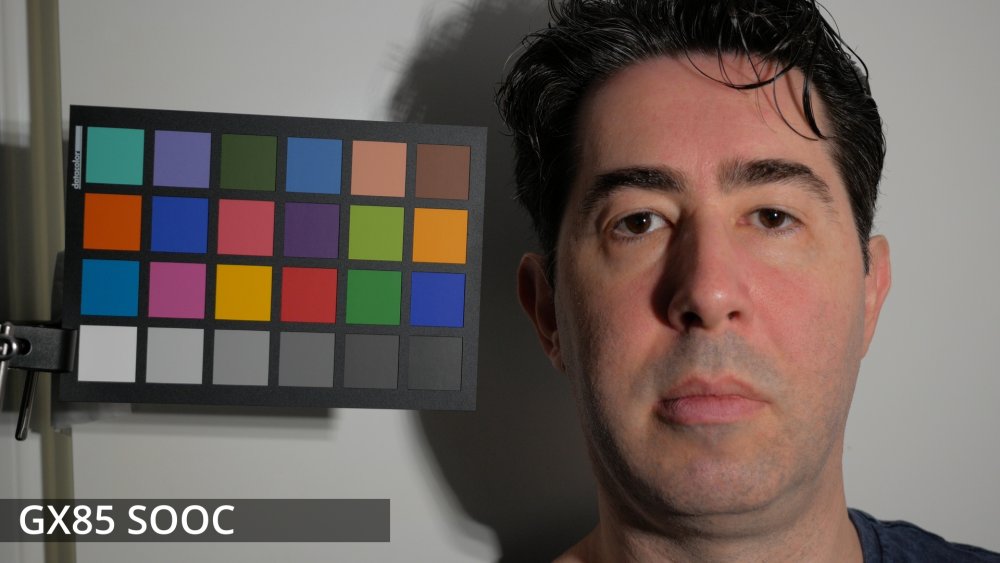
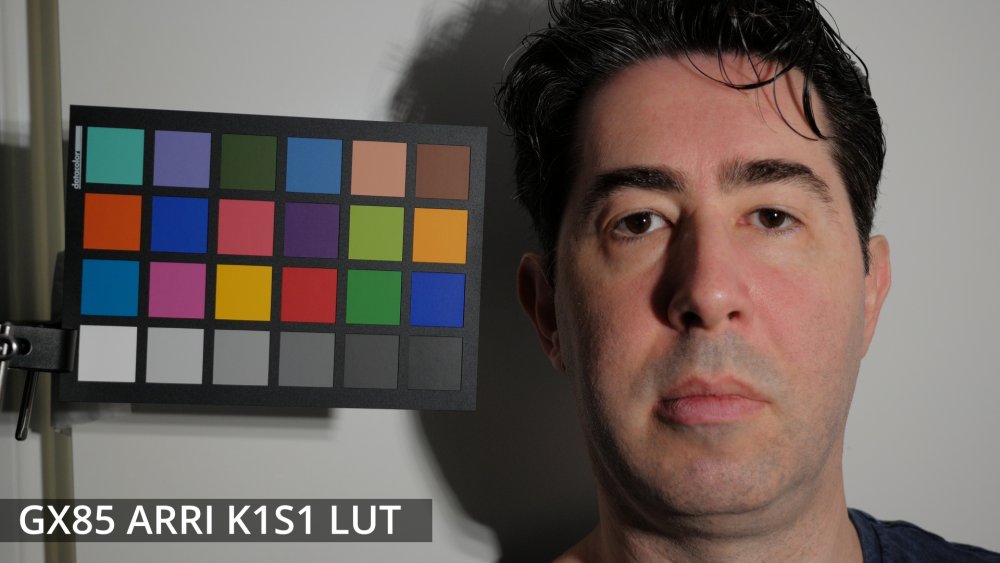
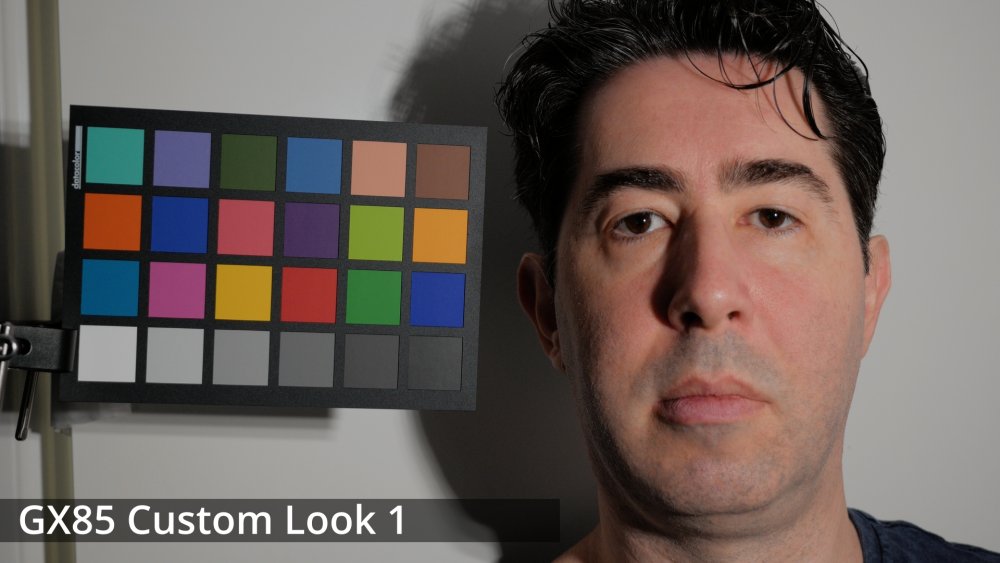
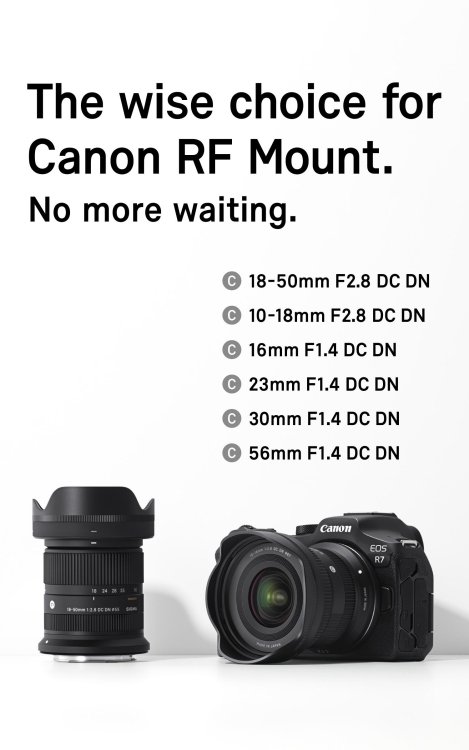
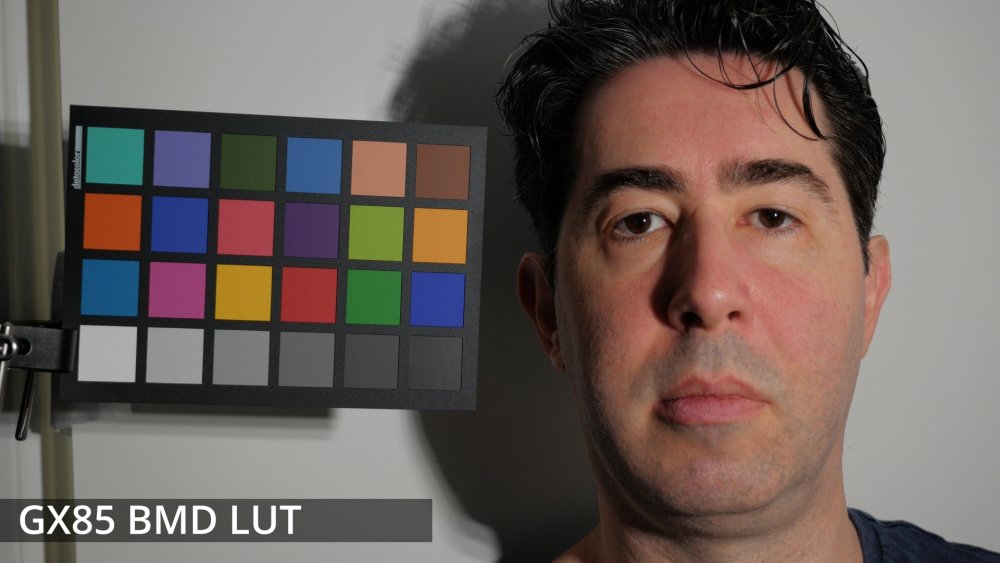
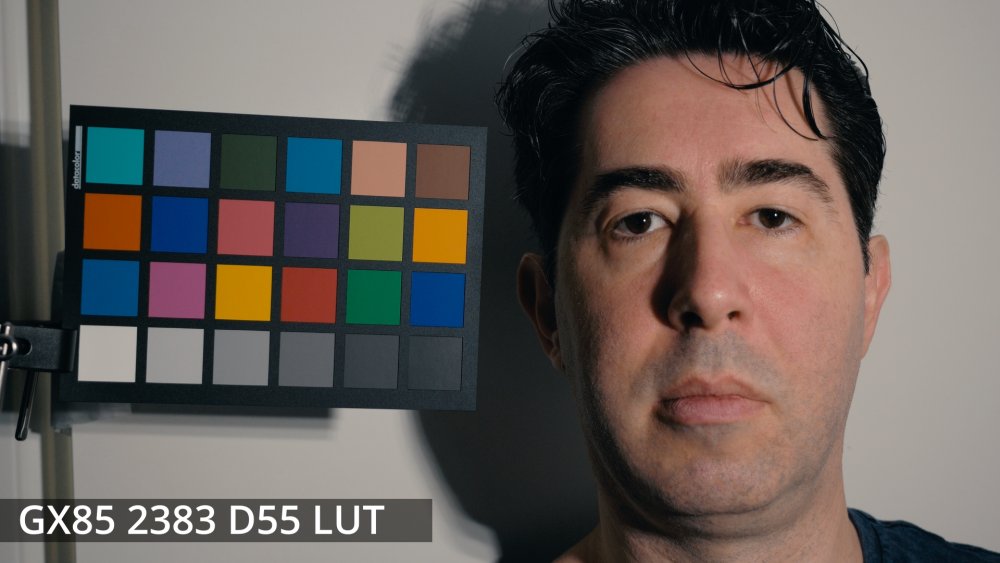
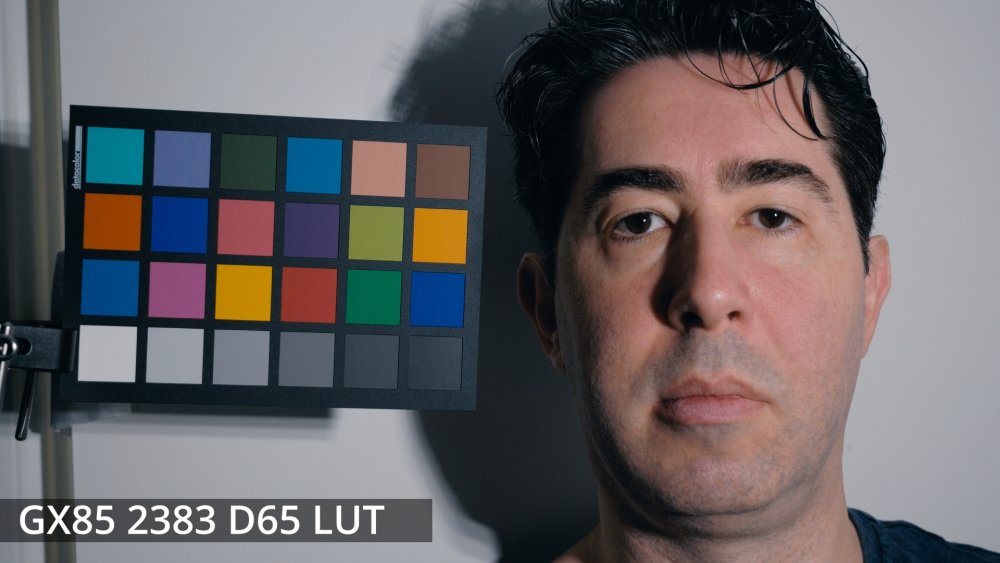
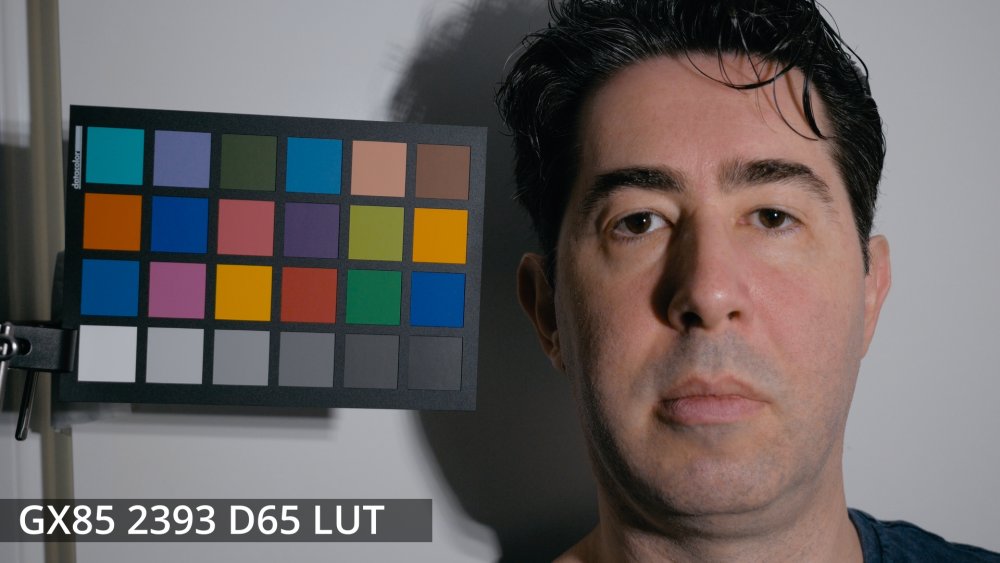
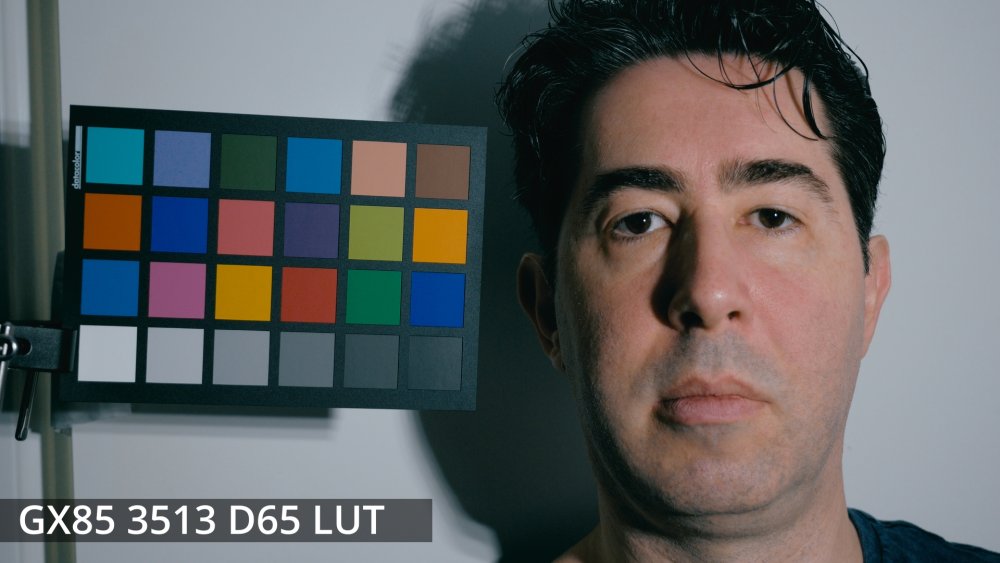
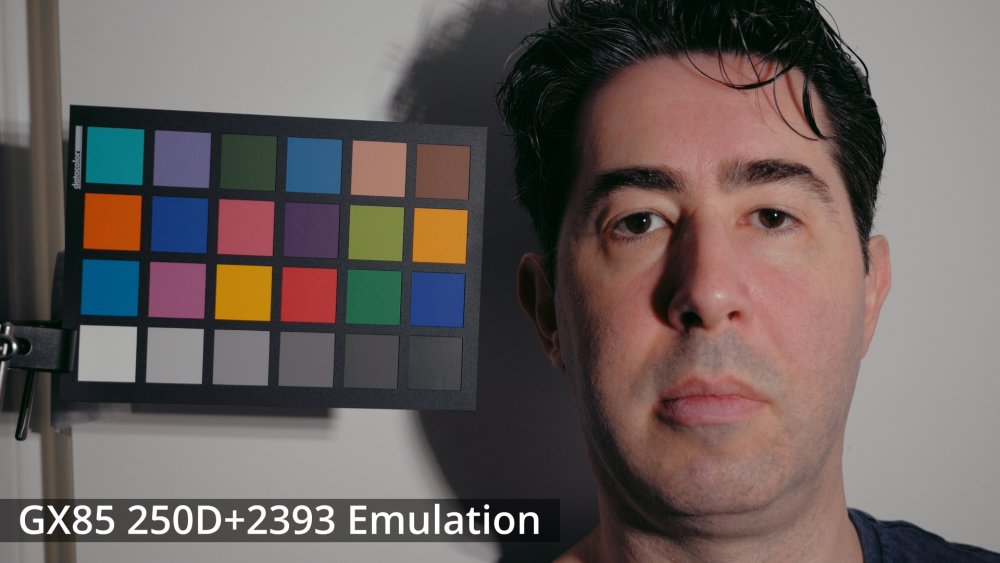
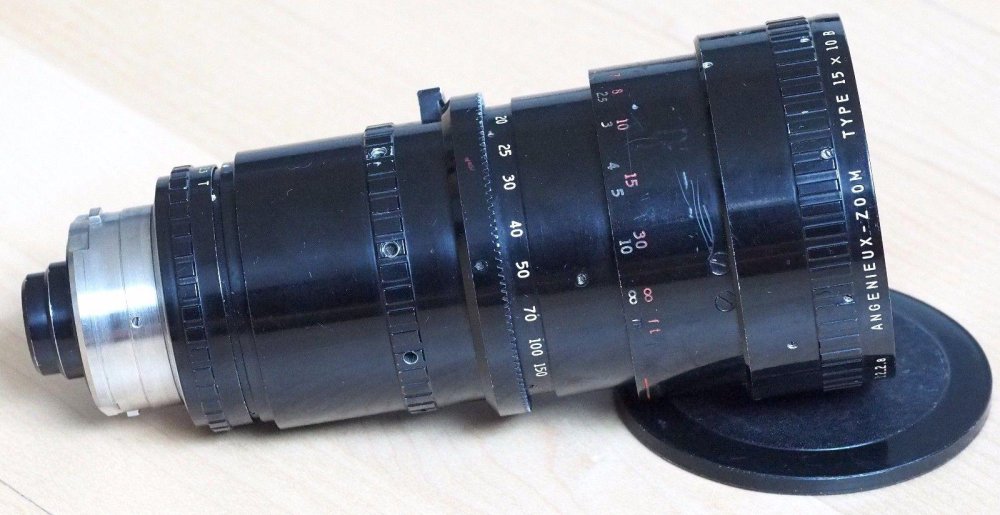
.thumb.jpg.a8ca677cfe50cffb97ed46499566d6f3.jpg)
